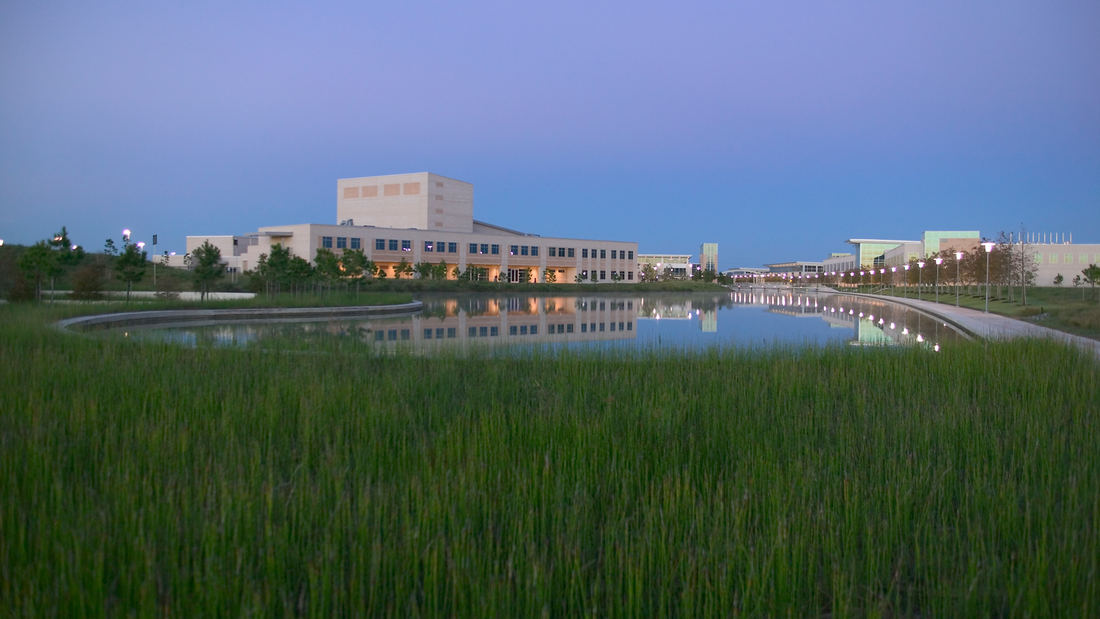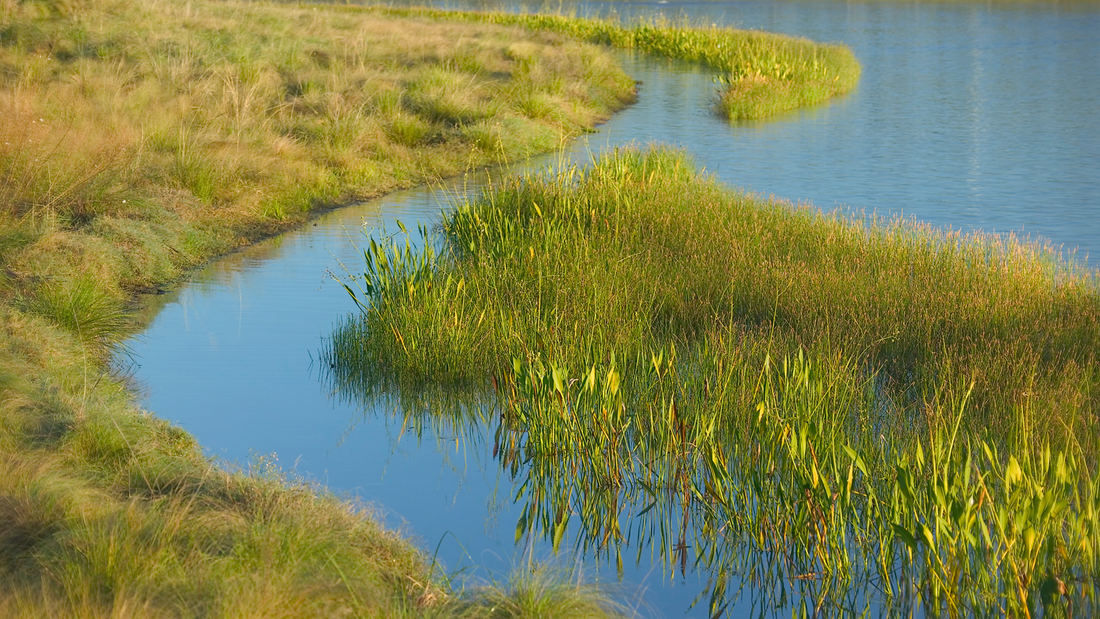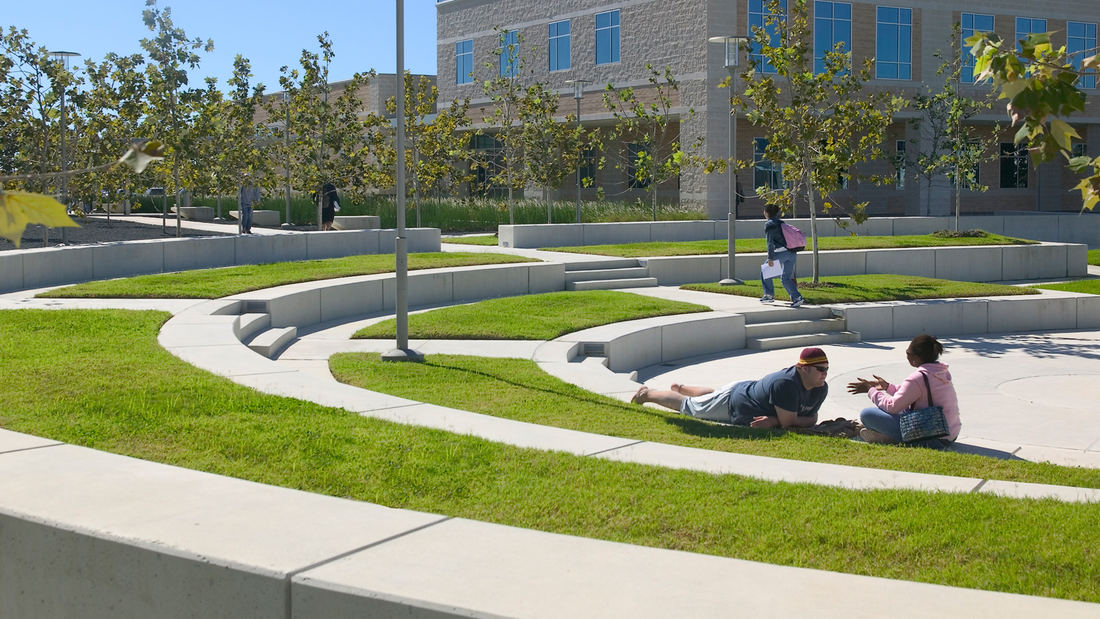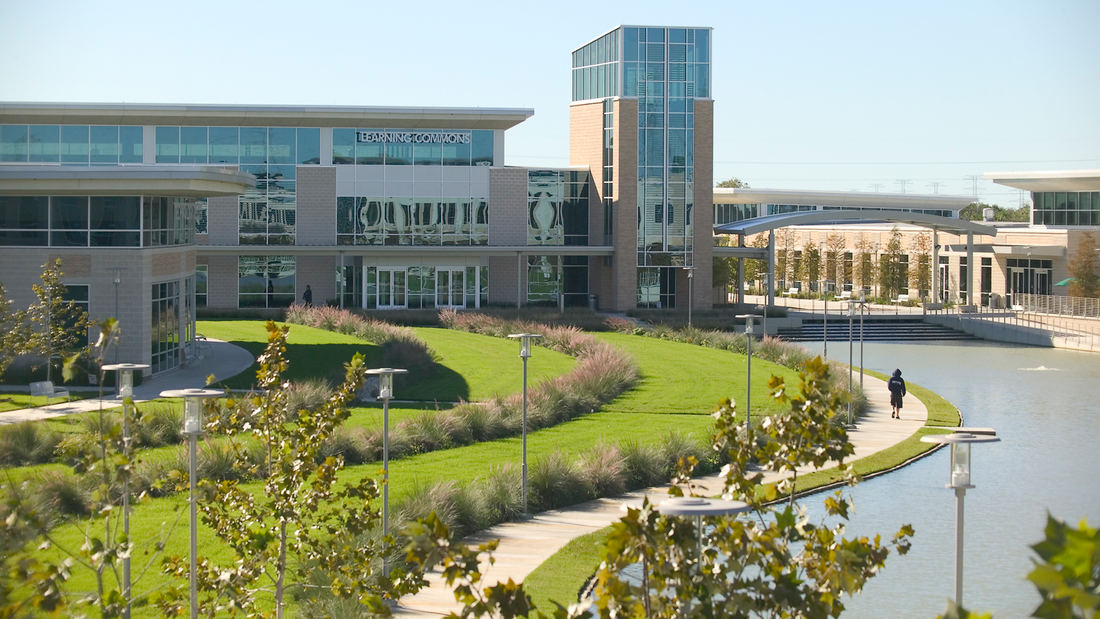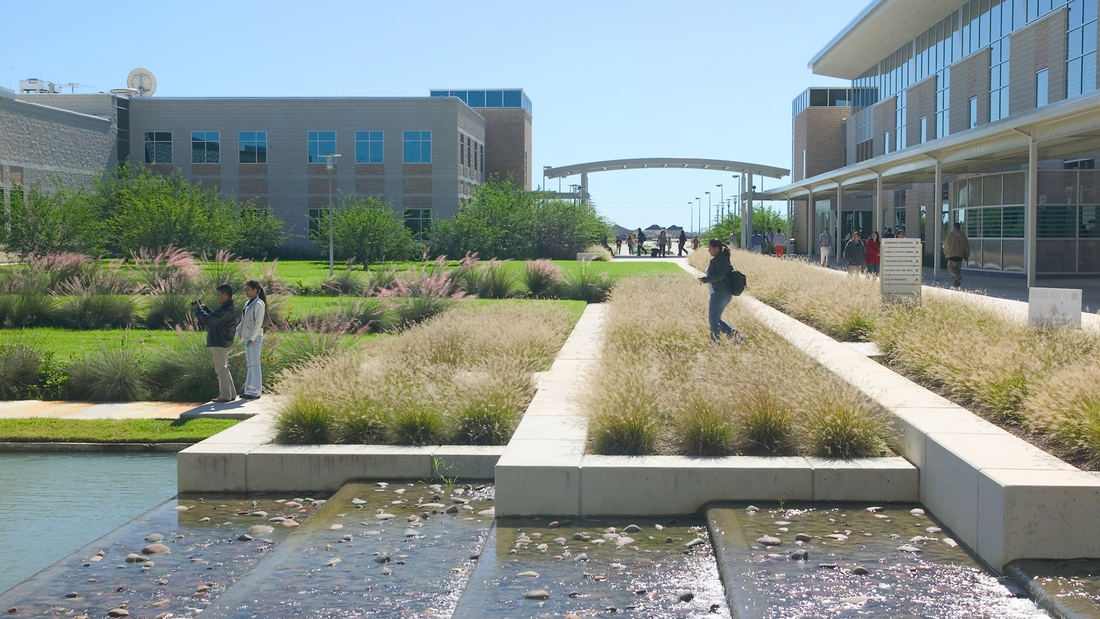The CyFair College Campus is a model for environmentally responsible development and restoration of a sensitive ecosystem. Located on the suburban fringe of northwest Houston, it is surrounded by the Katy Prairie, an endangered ecosystem of coastal prairie grass meadows marked by groves of trees and connected to a system of wetlands, bayous, and ponds.
SWA, in collaboration with the architect, chose an active approach to the restoration of the Katy Prairie. The master plan is dedicated to careful planning and design, enabling the development and restoration of a delicate ecosystem. The campus therefore becomes the educational model for students and members of the larger community – implementing environmentally sensitive design ideas. The plan introduces a variety of spaces to promote student/faculty and community interaction. Within the campus core, the landscape has a more refined treatment, reinforcing the beauty of the prairie through contrast with the carefully finished edges. The campus pathways direct movement through the campus along the water, and the core outdoor spaces provide additional classroom space.
Decades before acquisition by the College District, this flat site had been entirely cleared for grazing, resulting in the loss of the prairie ecosystem. The task of restoring the prairie and transforming this vast sterile site into an environmentally rich environment for learning was a significant challenge but was accomplished with the visionary commitment of the College, Community, and Community College District. The native environment was restored resulting in a campus that is oriented to water and meadows. Other major challenges included project schedules and budget constraints. Meeting both of these challenges, the entire CyFair College Campus was programmed, master planned, and the first phase designed and constructed in 21 months. More impressively the landscape, including all site development except roads, parking lots, utilities, and signage, was implemented for under $2.00 US per square foot.
Contrasting with the wild beauty of the Prairie, the formal appearance of the inner campus plantings draws people in and to the waterfront areas. As a public institution, CyFair College is designed with materials that will be long-lived and that are affordable, being responsive to the College’s limited maintenance resources. The use of native planting materials greatly reduces ground maintenance requirements to a surprisingly low level. More than 3,200 trees were planted on the campus including Bald Cypress, Loblolly Pine, Mexican Sycamore, Live Oak, and thorn-less Mesquite. On a clear fall morning, light glows on the rust and yellow prairie grasses creating a distinctive contrast against the deep blue water. Wildflowers continue to bloom as the campus comes back to life for the new Academic season. Muhly Grass has turned to a fall purple color and the Cypress trees are bright orange. This special prairie season has been fully restored to its original beauty.
The campus development increased areas of impervious surfaces, resulting in increased runoff being added to the already overburdened regional drainage system. The solution was a 132-acre detention lake that not only accommodates stormwater runoff but that also provides irrigation water for the campus, thus conserving water resources. The larger lakes incorporate shelves just below water level creating locations for the planting of native wetland plants such as Arrowhead and Sand Spikerush. These shelves have another practical use, as they are located at stormwater outfall points and therefore “scrub” runoff and improve water quality. All stormwater is captured on-site and filtered through sediment traps and wetland plants prior to its re-entry into the regional drainage system.
CyFair College is a commuter campus not connected to any public transit, and as a result, paved parking surfaces are extensive. To prevent damage from the heat-island effect, Loblolly Pine trees are integrated in double rows throughout the parking areas. Through a collaborative planning and design process involving a supportive community, District, and College leadership, and supported with research from regional experts, the design team has created a campus within a prairie that is focused on 18 acres of lakes. Water and prairie grasses are the defining elements of the Katy Prairie and have become the environmental signature of CyFair College and the larger community.
Stanford West Apartments
SWA placed a special emphasis on maintaining the riparian corridor with native planting, using consideration when dealing with the archaeologically sensitive areas of the site, as well as existing recreation trails and landscape amenities such as parks and play areas. The internal street grid and architectural and landscape elements are designed to recall the ...
Westmark School
Westmark is a private, second-through-12th-grade school focused on providing quality education to students with learning differences. The project itself has been divided into five separate phases, which will include site renovations for classrooms, courtyards, playgrounds, etc. The school provides a unique student experience that re-envisions traditional educa...
CSULB Liberal Arts Courtyards
The programming and design of the Liberal Art Courtyards were the result of the successful landscape master plan for 322 acres, completed by SWA in 2012 and enhancing the existing campus aesthetic and experience while improving functional relationships for its students, faculty, and community. Considerations included a wealth of open spaces largely devoted to ...
RIT Global Village and Global Plaza
Global Village, a pedestrian-only infill neighborhood adjacent to Rochester Institute of Technology’s academic core, and its mixed-use centerpiece, Global Plaza, create a social heart for 17,200 students and 3,600 faculty and staff. The landscape architects and architects collaborated on an urban design that establishes multiple “crossroads” ...


